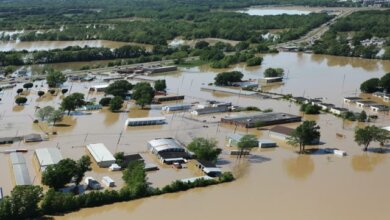रक्त के अभाव में न जाए किसी की जान, रक्तदान को बनायें जन आंदोलन

Lucknow: हर वर्ष 14 जून को उन स्वैच्छिक रक्तदाताओं का सम्मान किया जाता है, जो रक्तदान कर अनगिनत लोगों को जीवनदान देते हैं। इस वर्ष की थीम है, “रक्त दें, आशा दें:साथ मिलकर हम जीवन बचाते हैं।” (Give blood, give hope: together we save lives) है। इस थीम से प्रेरणा लेते हुए सभी को रक्तदान के लिए आगे आकर इसे जन आंदोलन बनाना चाहिए ताकि किसी की जान रक्त के अभाव में न जाए।
यह बातें विश्व रक्तदाता दिवस ( World Blood Donor Day) के अवसर पर प्रमुख सचिव चिकित्सा स्वास्थ्य, परिवार कल्याण एवं चिकित्सा शिक्षा पार्थ सारथी सेन शर्मा ने कही। वह राम सागर मिश्र अस्पताल में रक्तदान शिविर को संबोधित कर रहे थे। इस मौके पर प्रमुख सचिव, महानिदेशक चिकित्सा स्वास्थ्य डॉ रतन पाल सिंह सुमन व सीएमएस ने सबसे पहले रक्तदान किया।
अस्पताल के मुख्य चिकित्सा अधीक्षक डॉ. वी.के. शर्मा (V.K. Sharma) ने बताया कि शिविर में कुल 150 लोगों ने रक्तदान के लिए पंजीकरण कराया, जिनमें से 74 योग्य लोगों ने स्वैच्छिक रक्तदान किया। रक्तदाताओं में राम सागर मिश्र हॉस्पिटल के चिकित्सक एवं कर्मचारी, साथ ही राजेन्द्र, बोरा, समर्पण व एसएम नर्सिंग कॉलेज के विद्यार्थी शामिल रहे। रक्त संकलन का कार्य बलरामपुर चिकित्सालय की रक्तकोष टीम द्वारा किया गया।

एक पेड़ मां के नाम’ अभियान के तहत चंदन का पौधा रोपित
इस अवसर पर प्रमुख सचिव ने ‘एक पेड़ मां के नाम’ के तहत लाल चंदन का पौधा रोपकर मातृशक्ति को सम्मान अर्पित किया। उन्होंने कहा कि यह अभियान हमें प्रकृति, परंपरा और परिवार तीनों से जोड़ता है।
इस दौरान प्रमुख सचिव ने अस्पताल में शुरू किए गए एमएनसीयू वार्ड कभी दौरा किया और इसे बेहतर तरीके से चलने के लिए आवश्यक दिशा निर्देश भी दिए इस मौके पर अपर निदेशक डॉ. जी.पी. गुप्ता, डॉ. यू.एस. लाल, डॉ. एस.के. सिंह, डॉ. गिरीश पांडे, डॉ. नमिता अवस्थी, डॉ. मोना श्रीवास्तव, डॉ. स्नेह लता त्रिपाठी, डॉ. उबैद, डॉ. अजीत, चीफ फार्मासिस्ट राजेश झा, दिलीप, आलोक सिंह, महेश वर्मा, अरविंद श्रीवास्तव और हॉस्पिटल मैनेजर डॉ. अभिषेक सहित चिकित्सा अधिकारी एवं स्टाफ सदस्य मौजूद रहे।




